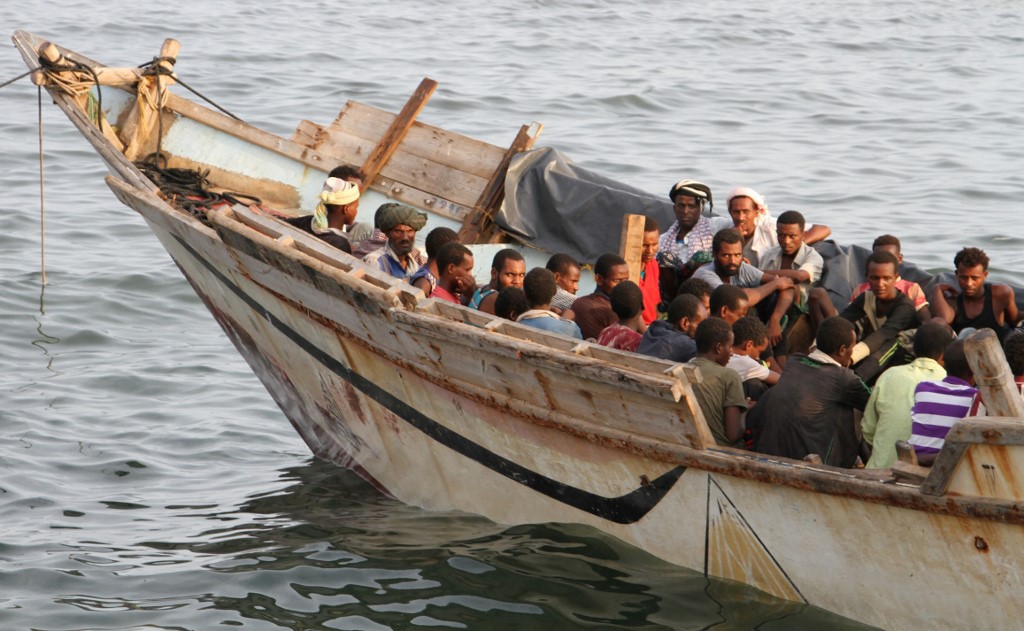DUBAI: Spain received the highest number of migrants in Europe with 37,900 registered arrivals in 2020. Yet that is only slightly higher than the number that Yemen recorded last year, 37,500, even though Yemen is in the midst of war, disease, economic crisis and is on the brink of famine.
By the end of 2019, Yemen was hosting an estimated 280,000 refugees and asylum-seekers, 96 percent of them from Somalia and 3.8 percent from Ethiopia.
Yemen has been unstable since mid-2014. War has raged between Houthi militia forces and the internationally recognized government of President Abdrabbuh Mansour Hadi, leading to what the UN has described as the world’s worst humanitarian disaster.
Yet thousands from the Horn of Africa continue to seek refuge in the war-torn country.

United Nations High Commissioner for Refugees (UNHCR) Representative Jean-Nicolas Beuze, who has been in the Yemeni capital Sanaa for the past 14 months, says these migration figures reflect the suffering of migrants.
“This speaks to the tragedies and persecution and suffering they have back home. They see no hope and no light at the end of the tunnel by staying in Somalia or Ethiopia and therefore Yemen, in their view, becomes safer than their own home,” Beuze told Arab News.
Beuze says that the international community should find ways to provide safer options for people to claim asylum “because going from Somalia to Yemen is not a solution.”
Migration between the Horn of Africa and Yemen has been common throughout history, with Yemen regarded as a center of routes linking Africa, Asia and Europe.
In recent years, due to political and economic instability and climate change that have caused deadly droughts in the Horn of Africa, the number of migrants traveling to Yemen has increased.
In 2019, with an average of 11,500 people boarding vessels each month from the Horn of Africa to Yemen, the International Organization for Migration (IOM) called it the “busiest maritime migration route on earth.”
Undeterred by the Gulf’s strict immigration policies for undocumented migrants, according to the IOM, nearly 90 percent of those who arrived in Yemen intended to continue to Saudi Arabia.
The UN body for migration says that most are unaware of the security situation in Yemen where they face serious threats to their safety, including fighting or abuses such as kidnapping, torture, exploitation and trafficking.

Earlier this month, the Houthi militia admitted that tear gas fired by guards into a migrant detention center caused the fire that killed at least 45 people – mostly Ethiopian – and wounded more than 200.
Despite the incident with the migrants and the Houthis, Beuze says that the Yemeni population is welcoming of foreigners, both immigrants and refugees.
“I must say, I am impressed by how hospitable the Yemeni people are, when they are themselves suffering,” he said.
“We don’t see that kind of hospitality throughout the rest of the world anymore, and the rest of the world probably has far more capacity to host, assist, protect refugees than Yemen, one of the poorest countries on earth.”
The surge in poverty across Yemen is driven by factors attributed to the war, according to a UN-sponsored report by the Pardee Center for International Futures entitled “Assessing the Impact of War in Yemen on Achieving the Sustainable Development Goals.”
A UN conference for aid to Yemen earlier this month appealed for $3.85 billion to address the impoverished Arab country’s needs. Only $1.7 billion was raised — a result the UN chief called “disappointing.”
Secretary-General Antonio Guterres called for countries to reconsider what they could do to stave off the worst famine the world has seen in decades.
Beuze said that the lack of aid support would hinder the progress made in Yemen over the past three years. The international community should instead capitalize on the progress made in order for Yemeni communities become self-reliant, he said.
“It will take much more time and much more money and much more investment to continue keeping their heads above the water if they start drowning,” Beuze said in reference to those living in Yemen.
“This is really not the time to abandon Yemen,” he said.



